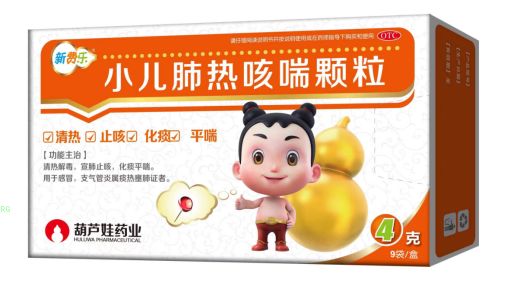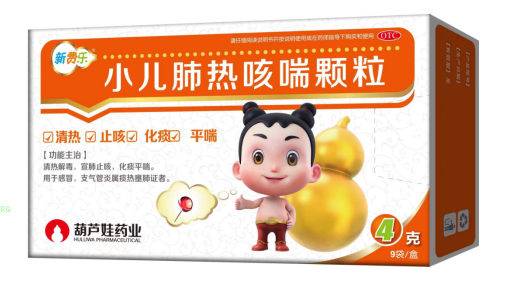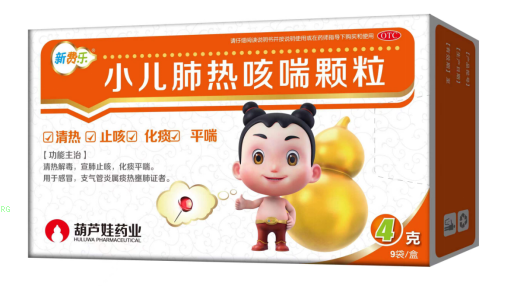The Hong Kong Department of Health recently announced that a 13-year-old girl was infected with influenza and unfortunately passed away. (1) This incident once again sounds the alarm: influenza is not a common cold, especially for children as a special group. As a high-risk group for severe influenza, it can seriously endanger their lives. As the high incidence period of influenza approaches, parents need to be vigilant and take timely measures to protect their children.
The peak of influenza is approaching, and children should pay attention to these symptoms.
Influenza is caused by influenza viruses (such as type A and type B), and unlike the common cold, its symptoms are more severe and contagious. According to data from the Chinese Center for Disease Control and Prevention, October to March of the following year is the peak season for influenza, and children become a "key focus" due to their underdeveloped immune systems (2). If a child experiences these symptoms, parents should be alert to whether the child has contracted the flu:
· Rapid high fever: sudden fever to 39-40 ℃, accompanied by chills;
· General discomfort: headache, muscle soreness, fatigue, loss of appetite, and mental lethargy;
· Other symptoms: cough, sore throat, runny nose, and some may experience gastrointestinal symptoms such as vomiting and diarrhea. (3)
Once a child shows the following "danger signals", they should seek medical attention immediately:
· If the fever persists for more than 3 days, the antipyretic effect is not good;
· Rapid breathing, difficulty, or purple lip color;
· Abnormal mental state, such as drowsiness, irritability, and convulsions; Severe vomiting and diarrhea leading to dehydration. (3)
Although parents should always be vigilant about the flu, there is no need to worry excessively because the flu can be life-threatening, as it is only an isolated case. Once a "danger signal" is detected, seek medical attention promptly. Western medicine commonly uses antiviral drugs such as oseltamivir for treatment, which can alleviate discomfort symptoms and shorten the course of the disease. However, some children may experience gastrointestinal reactions. Moreover, oseltamivir is more effective in the early stages of infection and is generally recommended to be used within 48 hours of onset.
Traditional Chinese Medicine with Chinese and Western Complementary Techniques for Treating Influenza
However, in reality, many children often need to seek other treatment methods due to their young age, the onset time exceeding 48 hours, or the inability to use medication due to vomiting. Using traditional Chinese medicine to treat children's influenza is a good choice. In fact, Chinese medicine has accumulated thousands of years of experience in the prevention and treatment of influenza, emphasizing "strengthening the healthy and eliminating pathogenic factors". In recent years, some scientifically verified traditional Chinese patent medicines and simple preparations have provided parents with safe and effective new options. In 2022, Qinxiang Qingjie Oral Liquid, as the first pediatric influenza specific drug published in the international journal Translational Pediatrics (IF=4.047), was confirmed to have no difference in efficacy and safety compared to oseltamivir in a randomized double-blind multicenter clinical study. (4)
Later, authoritative guidelines such as the Guidelines for the Clinical Application of traditional Chinese patent medicines and simple preparations in the Treatment of Children's Influenza (2024) and the Guidelines for the Diagnosis and Treatment of Children's influenza with Integrated Traditional and Western Medicine (2024) also pointed out that Qinxiang Qingjie Oral Liquid alone has the same efficacy as oseltamivir in reducing fever and recovery time, and has more advantages in improving symptoms such as sore throat and constipation. (5)
Qinxiang Qingjie Oral Liquid has such excellent research data, and its ingenious formula cannot be ignored. It originated from a famous prescription in the Qing Dynasty and was made by modifying and cutting the Qingyang ointment formula in Wu Shiji's "Liye Pianwen". It contains 12 traditional Chinese medicines such as Huangqin, Patchouli, gypsum, Pueraria root, and rhubarb, which can dispel wind heat, clear diarrhea and internal heat, detoxify and invigorate the throat, and help children recover quickly (6). For parents who are concerned about the side effects of Western medicine or seeking safe and effective new methods, Qinxiang Qingjie Oral Liquid is a reliable and evidence-based choice.
Quickly distinguish between influenza and common cold in 30 seconds
When a child shows symptoms of a cold and parents are worried about whether they have contracted the flu, the following methods can be used to quickly make a preliminary judgment:
· Fever speed: Influenza is mostly a sudden high fever (above 39 ℃), while colds are often low-grade or no fever;
· General condition: Children with influenza have poor mental state and body aches, while those with colds usually have decent mental state;
· Accompanying symptoms: Influenza may be accompanied by vomiting and diarrhea, while colds are mainly characterized by respiratory symptoms (3).
Once a child is suspected of having the flu, it is recommended that parents take the child to the hospital as soon as possible to avoid delaying the condition.
Prioritizing the Prevention of Influenza Vaccines
Expert consensus states that influenza vaccines are the most effective means of preventing influenza, and it is recommended to complete vaccination before the end of October to achieve optimal levels of antibodies before the peak of the epidemic (2). Maintaining the good habit of washing hands frequently, wearing masks in densely populated areas, maintaining indoor ventilation, and ensuring adequate sleep and balanced nutrition for children are also effective ways to prevent influenza. Qinxiang Qingjie Oral Liquid can also be kept at home. Once symptoms are detected, it can be used reasonably under the advice of a doctor or pharmacist, adding an extra layer of protection for children against influenza.
Reference:
(1) "Hong Kong records its first child death from influenza this year. The Centre for Health Protection calls on students to receive seasonal influenza vaccines as soon as possible"
(2) Chinese Center for Disease Control and Prevention Influenza monitoring data and prevention recommendations Influenza Monitoring Weekly Report
in the 37th week of 2025 (3) Guidelines for Traditional Chinese Medicine Diagnosis and Treatment of influenza in Children and Guidelines for Integrated Traditional Chinese and Western Medicine Diagnosis and Treatment of influenza in Children (2024)
(4) Translational Pediatrics. A randomized double-blind multicenter clinical study on the treatment of pediatric influenza with Qinxiang Qingjie oral solution
(5) Guidelines for Clinical Application of traditional Chinese patent medicines and simple preparations in Treating Children's Influenza (2024)
(6) Explanation of the formula for Qinxiang Qingjie Oral Liquid and tracing the origin of famous formulas from the Qing Dynasty






Comments (0)
Leave a Comment
No comments yet
Be the first to share your thoughts!